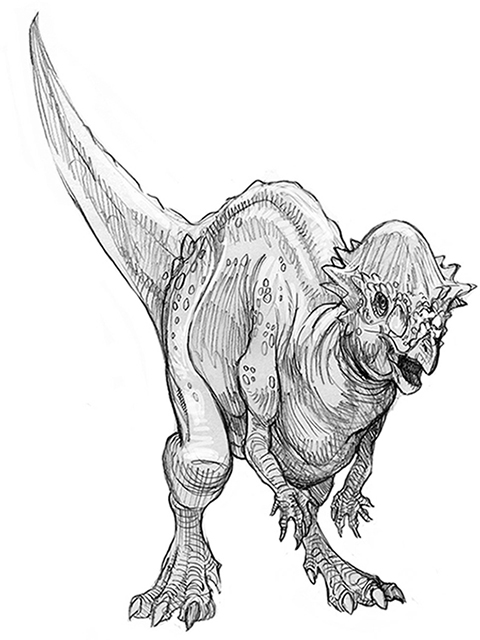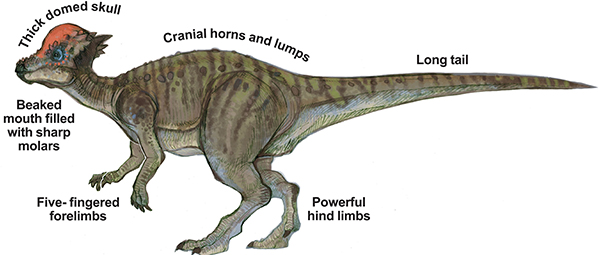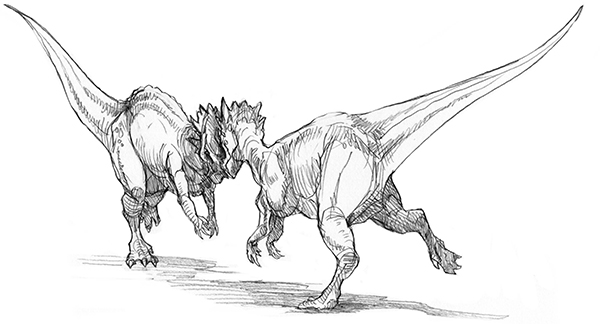

PRONUNCIATION | pak-ee-SEF-uh-lo-SAWR-us
SPECIES | Pachycephalosaurus wyomingensis
NAME | Thick Headed Lizard
FAMILY | Pachycephalosauridae
PERIOD | Cretaceous
DIET | Herbivore
SIZE | 26 feet (8m)
YEAR DISCOVERED | 1931
The pachycephalosaurus (also known as pachy) is one of the most unique and unusual of all of dinosaurs. Its domed and horned crown is the most notable aspect of this bipedal herbivore and has created intense debate among paleontologists. Some speculate that the function of the crests is for display, others suggest its purpose to be for rutting behavior between males. The bang of two pachy skulls together would have made a huge noise.
The pachy has the body of a theropod and the head of a triceratops. Its small stature (no larger than a pony) would place it at a disadvantage to other herbivores such as triceratops and apatosaurus and no match for large carnivores like T-rex.

It’s reasonable to speculate that the pachy was a versatile creature, fast and agile to navigate rocky terrain, but at the same time quick and small to evade large predators. Pachys are also thought to enjoy plants, berries and fruit that were beginning to evolve in the late Cretaceous environment.

Attributes other than its domed crest make the pachy unique. Its beaked mouth make it appear to be herbivorous, yet its small bipedal design along with sharp molars and possible binocular vision make it appear carnivorous. Paleontologists believe that the pachy had a gizzard similar to modern birds for digesting tougher plants.

As with many modern animals it is thought that the thick domed skull of the pachy was used in dominance and courtship duels among males. Pachycephalosaurus could lock and align its neck and spine to create a rigid, battering impact.

It’s possible that the pachycephalosaurus, like modern mountain goats, made its home in the rocky crags of the Cretaceous mountains, which would provided safety from predators. The rugged terrain and plants of this environment would make for an equally rugged and unique dinosaur. Fossil remains of pachycephalosaurus and its cousins have been found as far north as Montana, Wyoming and Canada.